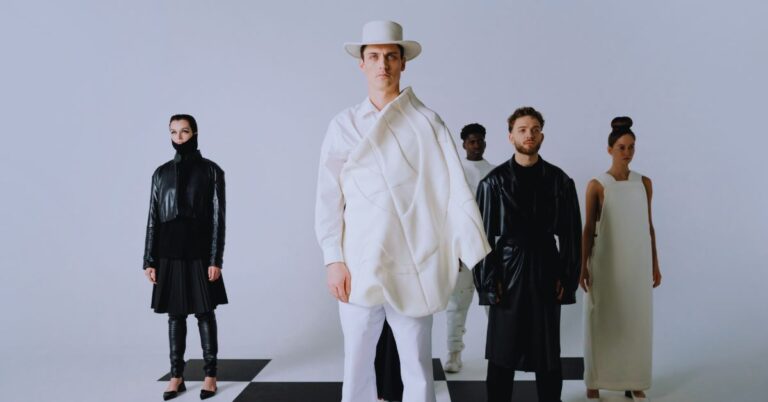Japanese Style Clothing: Master the Art of Layering
Japanese Style Clothing offers more than garments; it reflects a philosophy where form, function, and storytelling intertwine. From the Heian period’s regal kimono to Harajuku’s riotous street styles, this sartorial heritage informs global trends and inspires sustainable innovations. In this article, we explore the evolution, components, market dynamics, and styling techniques that define Japanese Style Clothing for modern wardrobes.
Why Japanese Style Clothing Matters
Understanding Japanese Style Clothing allows us to appreciate how culture and craftsmanship shape fashion. Traditional techniques like sashiko embroidery and indigo dyeing have influenced Western brands, while street subcultures push boundaries through self-expression and rebellion. Moreover, eco-conscious principles such as mottainai—which discourages waste—resonate with slow-fashion movements worldwide.
Evolution from Tradition to Modernity
Over more than a millennium, Japanese Style Clothing has transitioned from formal court attire to eclectic streetwear. Periods of cultural exchange—such as the Meiji Restoration—introduced Western silhouettes, fostering hybrid aesthetics that continue to evolve in Tokyo’s dynamic fashion quarters.
Historical Foundations of Japanese Style Clothing
The Heian Period and the Birth of Kimono
The kimono, Japan’s most iconic garment, originated in the Heian period (794–1185) when Chinese court fashions gave way to a distinct Japanese identity. Early ensembles featured multiple silk layers—sometimes up to twelve in the junihitoe—signifying rank and ceremony. Over time, the design simplified into the modern single-layer kimono, worn today at festivals, weddings, and formal events.
The Edo Period: Yukata and Everyday Dress
During the Edo period (1603–1868), the yukata emerged as a lightweight, casual cotton robe for summer and communal baths. Paired with geta sandals and obi belts, yukata designs showcased seasonal patterns—cherry blossoms for spring, waves for summer—to reflect nature’s cycles.
Meiji Restoration and Western Influence
The 1868 Meiji Restoration marked Japan’s rapid modernization. Western fabrics, cuts, and tailoring (yōfuku) entered daily life, especially in urban centers. Yet traditional garments remained in parallel, leading to a hybrid wardrobe that combined kimonos with Western coats and trousers.
Main Components of Traditional Japanese Style Clothing
Wafuku Types: Kimono, Yukata, Haori, Hakama
- Kimono: A T‑shaped robe secured by an obi, available in silk for formal wear or cotton blends for casual settings.
- Yukata: Informal summer cotton robe, often unlined, ideal for festivals and ryokan stays.
- Haori: Short, hip‑length jacket worn over kimono, originally by men but now unisex.
- Hakama: Pleated trousers or skirt, associated with martial arts and academic ceremonies.
Accessories: Obi, Tabi, Geta, Zōri
- Obi: Wide sash for securing kimonos; styles range from simple belts to elaborate bow knots.
- Tabi: Split‑toe socks worn with sandals or zōri, blending comfort and practicality.
- Geta & Zōri: Elevated wooden sandals (geta) or flat woven sandals (zōri), selected based on formality and weather.
Symbolic Colors and Patterns
Colors and patterns on Japanese T-shirts carry deep meaning, rooted in cultural traditions. White (shiro) represents purity and divinity in Shinto rituals but can also signify mourning in Buddhism. Indigo (ai) embodies protection and longevity, often seen in traditional dyeing techniques. Red (aka) is used to ward off evil, symbolizing good luck and celebration. Patterns draw from nature—cherry blossoms (sakura) evoke spring and the fleeting beauty of life, cranes (tsuru) symbolize longevity and good fortune, and waves (seigaiha) represent peace and resilience. These designs transform Japanese T-shirts into wearable art, blending modern style with timeless symbolism
Transition to Contemporary Japanese Style Clothing
Harajuku and Shibuya: Birthplaces of Street Fashion
From the 1980s onward, Harajuku and Shibuya districts became global beacons for youth culture. Observers like ACROSS documented evolving “street fashion” trends, where music, art, and politics converge in daily outfits. Styles range from the dramatic silhouettes of Visual Kei to the sweetness of Lolita ensembles.
Subcultures: Lolita, Visual Kei, Gyaru
- Lolita: Victorian-inspired dresses with petticoats, lace, and bonnets, emphasizing modesty and cuteness.
- Visual Kei: Androgynous, rock‑inspired glamour featuring bold makeup, spikes, and metallic fabrics.
- Gyaru: Trendy, Western-influenced looks with bleached hair, decorated nails, and platform shoes.
Tokyo-Tiger and the Rise of Accessible Streetwear
Tokyo-Tiger bridges tradition and trend, offering graphic tees, hoodies, and Hawaiian shirts adorned with ukiyo-e motifs and witty slogans. As an affordable gateway to street fashion, Tokyo-tiger appeals to global audiences seeking a playful taste of Japanese Style Clothing.
Modern Aesthetics and Trends
Minimalism and Functional Design
Japanese minimalism—characterized by clean lines, neutral palettes, and technical fabrics—has achieved international acclaim through brands like MUJI and Uniqlo. Utilitarian silhouettes prioritize versatility, enabling users to layer without bulk.
Sustainable Practices and Slow Fashion
Rooted in the principle of mottainai, designers such as Orslow and Paper Sleeve prioritize locally sourced materials, zero‑waste patterns, and upcycled textiles. This slow-fashion ethos counters fast-fashion’s disposable culture and reinforces quality craftsmanship.
Innovation in Menswear: Japan’s Global Influence
Today’s menswear scene—led by names like Sacai, Junya Watanabe, and Mihara Yasuhiro—melds classic tailoring with avant-garde elements, from asymmetrical cuts to hybrid textures. Japanese brands maintain robust domestic manufacturing, ensuring attention to detail and limited run exclusivity.
Styling Guide for Japanese Style Clothing
Layering Techniques
Layering is central to Japanese aesthetics. Start with a fitted base (e.g., slim tee), add a mid-layer like a relaxed kimono cardigan, and finish with a tailored overcoat. Varying lengths and textures—linen under wool, denim over silk—add depth without sacrificing cohesion.
Mixing Patterns and Textures
Balance bold prints (e.g., tokyo-tiger graphics) with solids. Limit to two patterns per outfit to prevent visual clutter. Combine matte and glossy finishes—cotton tees with satin skirts—for subtle contrast.
Accessorizing for Authenticity
Select tabi-style sneakers or black split-toe ankle boots to nod at traditional footwear. Incorporate an obi-inspired belt or artisan jewelry—lacquer earrings or bamboo bangles—for cultural resonance.
The Market and Global Reach
Export Trends and Economic Impact
Japan’s clothing and accessories exports reached ¥12.1 trillion in February 2024, reflecting sustained global demand for quality craftsmanship and design innovation.
Leading Brands: From Onitsuka Tiger to Tokyo-Tiger
- Onitsuka Tiger: Established in 1949, pioneered athletic streetwear with iconic silhouettes like the Mexico 66 sneaker.
- tokyo-tiger: A 2020s label democratizing ukiyo-e prints and Tokyo-inspired graphics on tees and hoodies.
Emerging Designers and Future Directions
New talents—such as textile artist Eri Wakiyama and sustainable label Zero Waste Daniel Japan—are expanding the dialogue around gender fluidity, circular production, and digital fashion shows.
Conclusion
Japanese Style Clothing stands at the intersection of heritage and innovation, offering a spectrum from formal kimono to rebellious streetwear. Embracing principles like mottainai fosters sustainability, while subcultures in Harajuku ignite global creativity. Brands such as Onitsuka Tiger and tokyo-tiger demonstrate how tradition and trend can coexist, catering to both luxury aficionados and entry-level enthusiasts. By mastering layering, understanding color symbolism, and respecting garment provenance, you can integrate Japanese Style Clothing into your wardrobe with authenticity and flair.
Call to Action: Explore our Japanese Fashion Guide for in-depth styling tutorials, and visit the Tokyo-Tiger Official Site to discover graphic streetwear that blends tradition with modern edge.
Frequently Asked Questions
What makes Japanese-style clothing unique?
Japanese Style Clothing emphasizes layering, texture contrast, and cultural symbolism—traits rooted in centuries-old traditions yet expressed through contemporary innovation.
How can I start incorporating Japanese Style Clothing into everyday wear?
Begin with neutral basics—slim tees and tapered pants—then layer with kimono cardigans or tokyo-tiger hoodies for instant stylistic flair.
Is it acceptable to wear a kimono casually?
Yes—modern casual kimono made from cotton or linen can function like lightweight cardigans, perfect over jeans or dresses for a refined, easygoing look.
Where can I find sustainable Japanese Style Clothing brands?
Look for labels like Orslow, Paper Sleeve, and Zero Waste Daniel Japan, which prioritize local production, upcycling, and natural dyes.How often should I repeat “Japanese Style Clothing” for SEO?
For a 3,500+ word article, aim to integrate “Japanese Style Clothing” around 10 times to balance search optimization with natural readability.







